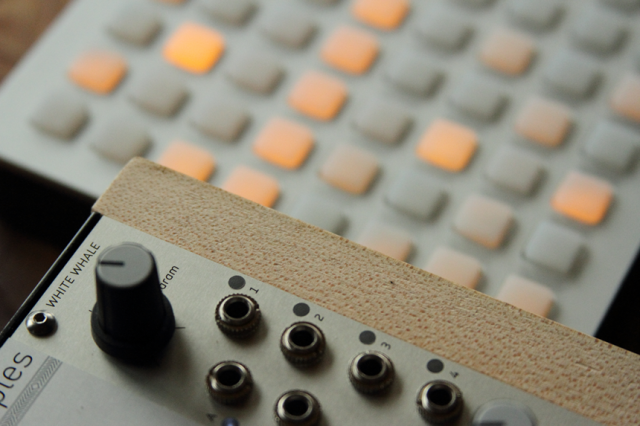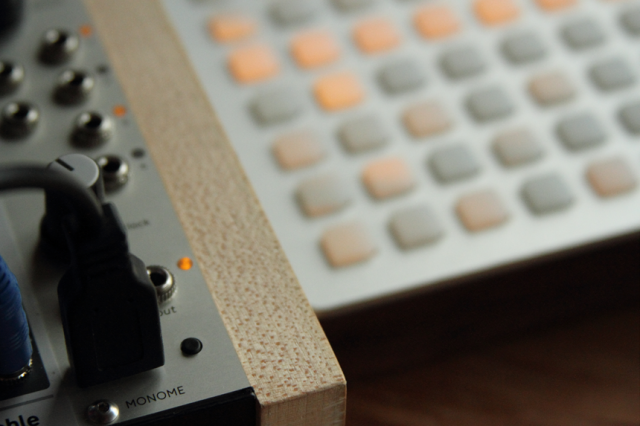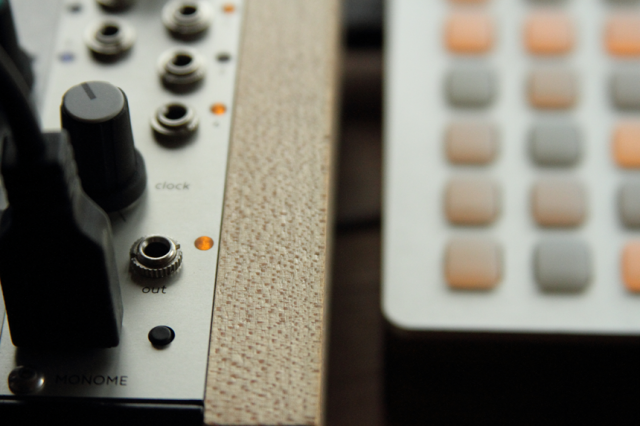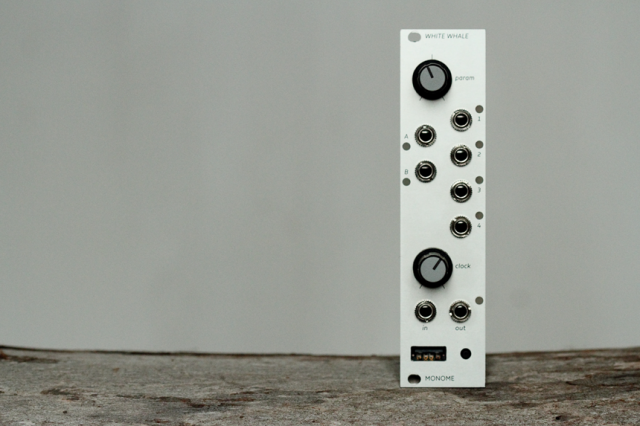It seems everyone is getting in on modular gear these days, thanks to the Eurorack format. But many of these modules are variations on a theme – new models of old classic modules, existing synthesis components and filters that have just been reborn as a module.
monome white whale, shipping this month, is something different. Connect a monome grid controller to a modular, and suddenly that array of light-up buttons becomes a probabilistic sequencer. It’s live performance oriented in a way too few modules are. The results are surprising and lovely. The solution isn’t cheap – you need a monome in addition to the modular rig and sequencer module, and the setup is optimized for the larger, spendier monome models. But it does produce a standalone setup that’s a joy to behold.
white whale – possibilities from tehn on Vimeo.
The basic concept starts with fairly standard step sequencing. You get a 16-step loop with four triggers per step. Where things get interesting is adding probability indexes for each trigger and channel, which can add mutes, fills, and melodies. And various patterns can be controlled and chained, with additional chance.
In fact, it’s inspiring enough that you might want something similar outside the modular context.
Retail price: US$280. Shipping this month.
Full details from monome:
Requirements Monome grid controller
Width 6hp
Depth 40mm (“skiff friendly”)
Power 12v: 18mA, -12v: 17mA
5v: 42mA (grid unconnected), up to 600mA (grid connected, see note below **)Description
White Whale is the culmination of methods and experiments based on a decade of step sequencer design for the grid.
A monome grid is plugged into the front panel of the module, serving as a complete interface. The sequencer continues running when the grid is disconnected, facilitating both live performance and precomposed playback of generative systems.
A sixteen step loop is the foundation. 4 triggers can be toggled per step, along with two separate CV values. 0-10v CV can be dialed via a parameter knob, copied from other steps, and tuned up and down via the grid. A CV map mode is provided for creating scales, and preset scales are recallable.
A probability index is provided independently for the triggers and each CV channel. These can serve as step mutes (at 0 or 100 percent) or chance possibility per step (for fills, emergent melody generation, etc). Each CV step can be set to have a choice of several values.
Sixteen patterns are quickly accessible. For longer sequences these patterns can be strung together in any determined order, including chance possibilities between pattern selection.
Sets of patterns are storable to internal flash memory for instant recall on power-up.
Timing can be internal (controlled via a panel pot) or externally triggered. Loop lengths and positions can be set intuitively on the grid.
Many subtle additional features make this instrument incredibly versatile yet approachable, introducing possibilities far beyond the standard step sequencer.
* Grids
There have been many editions of monome grids over the years. White Whale is optimally designed for late 128 (8×16) models that support variable brightness (2012 and on). Smaller grids are supported, but pattern step lengths are adjusted. Larger grids are supported, but presently the bottom half will not be used. Mono-brightness grids are supported, but the data displayed will be less rich.
** Power
Monome grids require a large amount of 5V power, which may not be typically available on all eurorack systems. Be sure to check the ratings of the power supply to be used.
Furthermore, eurorack power systems are not well designed for dynamic power loading. Undesirable anomalies may be introduced in certain eurorack configurations when shared with a grid controller. We’ve designed a small breakout adapter (ext5v) to separately power the grid controller if needed. If this adapter is used, very little 5V will be used from the eurorack power supply. The adapter requires a separate 5V supply which delivers at least 1A on a 2.1mm center positive plug.
By the way, interested in doing this sort of sequencing without necessarily using a modular? Here are a couple of resources:
parc is a free MIDI-based sequencer, vintage monome patch and an early basis for what’s in this new project.
parc and slide from tehn on Vimeo.
And Brian points us to the functions posted in the preliminary manual for white whale, such as the scale list at the bottom:
http://monome.org/docs/modular:whitewhale
Of course, you could cook your own creations, too, for this or other control methods (MIDI keyboards, for instance).



